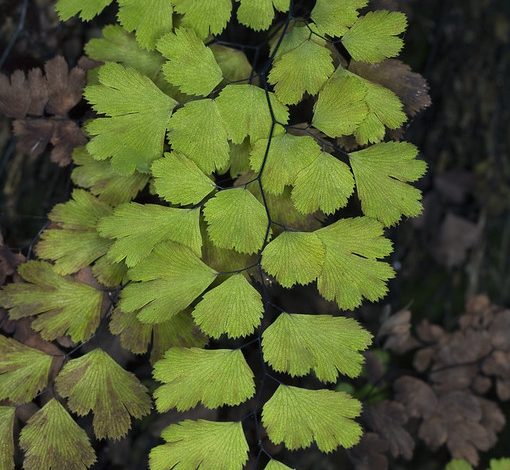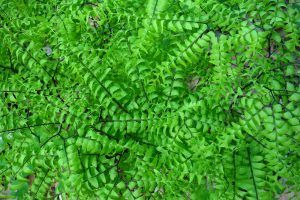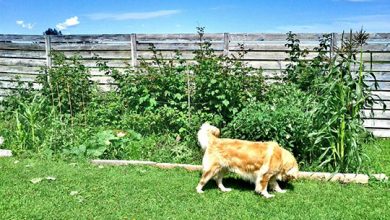Adiantum: [Cultivation, Substrate, Irrigation, Care, Pests and Diseases]

 The adiantum, better known as maidenhair, represents an ideal species to add greenery to gardens, since it is similar in structure to the fern.
The adiantum, better known as maidenhair, represents an ideal species to add greenery to gardens, since it is similar in structure to the fern.
It can be seen with evergreen or semi-evergreen leaves, since it has been able to adapt to climate change, although its origin is tropical.
Due to its survival conditions in ecosystems as diverse as forests or desert cliffs, it can be grown indoors or outdoors.
If you are looking for a kind of similar characteristics to give life to your garden or decorate the interior of the house, here we tell you everything.
Important points when sowing Adiantum
- When? In spring or autumn.
- Where? In shade or semi-shade, in well-drained soil.
- How do we prepare the land? With organic matter to receive enough nutrients.
- How should we water? Abundant in order to keep the environment moist.
- How often do you have to water? Every day in summer, more reduced the rest of the year.
- What pests and diseases does it have? Slugs and snails mainly.
Characteristics of the adiantum
- Plant Family: Pteridaceae
- Genus: Adiantum
- Species: Adiantum capillus-veneris
- Origin: Rainy tropical regions
- Hardy herbaceous plant.
- Height: 20-35 cm, some varieties up to 110 cm.
 The generic name is derived from the Greek word adiantos, meaning «not wet», an apt description for the fern, as its leaves repel water.
The generic name is derived from the Greek word adiantos, meaning «not wet», an apt description for the fern, as its leaves repel water.
Maidenhair ferns have delicate fan-shaped leaf segments, typically clustered on black, flushed stems.
As well as being a very popular houseplant, the Maidenhair fern can also be found in the wild, growing in places other plants don’t, such as on rock faces and between rock crevices where moisture from the filtering of the water keeps them alive.
Although visually impressive at all stages of their growth, they are considered a slow-growing fern, typically taking up to three years to reach their full mature size.
When to sow adiantum?
The time will vary depending on the sowing method chosen. When it comes to rhizomes, it can be both in spring and in autumn.
If it is due to spores, you have to wait until they are generated in the plant.
Where to plant adiantum?
The adiantum can live outdoors or indoors, but it is very important to keep it out of direct sunlight.
It is best to place it in a shaded space where it receives indirect sunlight.
An important detail around this point is that it is a somewhat delicate species with changes in the environment.
For this reason, it is recommended to establish it in a definitive space from the beginning, even if it is a planting in pots.
How to prepare the land?
For the species to be in the most favorable development conditions, the land must be prepared with sufficient organic matter.
The most recommended thing is that this is provided through earthworm humus, but any other homemade fertilizer will do.
In addition, it must have a good drainage system because it is a species that loves humidity a lot and it must be allowed to flow.
The pH should be kept calcareous, since it does not usually behave very well in soils with a high level of acidity.
After planting, applying a layer of mulch will be a good plan to conserve humidity and cool down your environment.
How do we water the adiantum?
- The adiantum in natural conditions is located in environments loaded with high humidity.
- For this reason, daily watering (especially in summer) is essential.
- This must be abundant to ensure that it penetrates to the depths of the ground, but taking care not to generate large puddles.
- Of course, the irrigation must be oriented to the base of the plant avoiding that the humidity touches the foliage.
How often do we water the adiantum?
Irrigation is recommended to be done daily to prevent the soil from drying out.
In winter this regularity can vary because the temperatures do not usually promote such a strong evaporation.
How to sow step by step?
The adiantum can be planted in two ways: by means of rhizomes and by making use of the spores.
In both cases it will be necessary to have a plant available, either from someone you know or from a nearby forest.
Sow by rhizomes
To plant adiantum by rhizomes, the following steps will be followed:
- Choose a plant that is in its adult version.
- Carry out a pruning, eliminating the parts that are withered and the oldest rachis.
- Dig up the rhizome and divide it using a shovel to help you cut more accurately and faster.
- Extract the part you have selected and transfer it to an individual pot with a good substrate to start its multiplication process.
- Make sure that the crown remains in the superficial part of the pot because from there the growth process of the new plant will begin.
Sow by spores
In the case of preferring sowing by spores, the step by step will be as follows:
- Select a plant that has already produced spores. These are orange in color and are located on the back of the fern leaflets.
- Extract the spores you need, providing that it has a certain maturity condition.
- Prepare a planting box with substrate and humus and spread the spores on the surface.
- Water abundantly to ensure that the entire substrate is well moist.
- Cover the planting box with a plastic material that helps maintain the high humidity conditions of the environment.
- Place the box in a cool space, away from drafts, where there is a temperature of approximately 20º C.
- Transplant the small seedlings when they are strong and make sure to maintain the humidity level so that they establish more easily.
What care does adiantum need?
- Fertilizing this type of plant is a good idea to keep it with abundant and lively foliage.
- The ideal is to apply small doses on a monthly basis in the spring and autumn seasons. The rest of the year it is not necessary.
- In the case of pruning, it will only apply to improve the structure when there are withered parts that disfigure the environment.
- This will also do a lot to make the plant more radiant and lush.
What pests and diseases affect the adiantum?
Preferring a humid environment, there are some pests such as snails and slugs, which can be attracted to its structure.
However, the reality is that this is not very common and can be prevented without major problems by using neem oil as a repellent.
The adiantum is a species whose main requirement is a high level of humidity.
Hence, if it is planted in a space close to a stream, the chances that its development will be affected are almost nil.
And, if what you are looking for is to recreate an enchanted forest-style landscaping, take advantage of planting it among gray rocks.
This will offer quite a striking contrast that, together with the green foliage and the stream, will transport anyone to a true paradise on earth.

![Photo of Deciduous Forest: [Concept, Characteristics, Fauna and Flora]](https://www.complete-gardening.com/wp-content/uploads/2021/06/bosque_caducifolio_1562323734-390x220.jpg)

![Photo of Dimorfoteca: [Cultivation, Irrigation, Care, Pests and Diseases]](https://www.complete-gardening.com/wp-content/uploads/2022/08/dimorfoteca-cultivation-irrigation-care-pests-and-diseases-390x220.jpg)
